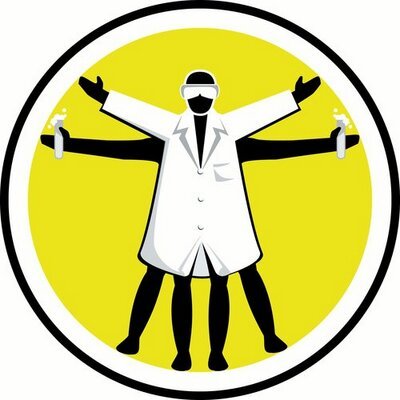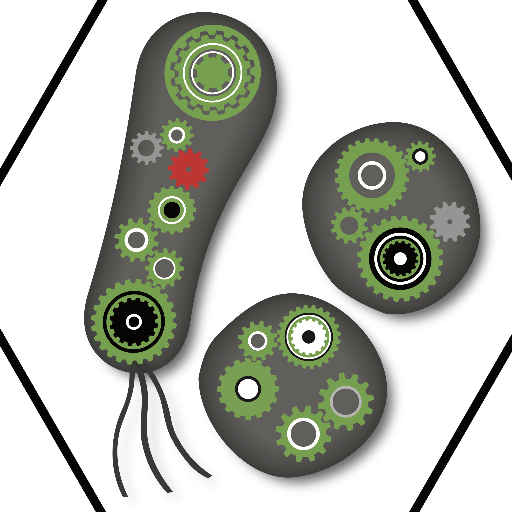
Kiran Raosaheb Patil
@kiran_r_patil
Followers
3K
Following
9K
Media
70
Statuses
2K
Professor of Molecular Systems Biology, @MRC_TU @Cambridge_Uni MRC & ERC Investigator. Metabolic networks, Microbial communities, Evolution, Comp. modelling.
Cambridge, UK
Joined August 2014
Could gut microbes protect us from toxic 'forever chemicals’? 🧪 Scientists from @MRC_TU have discovered that certain species of microbe found in the human gut can absorb PFAS – the toxic and long-lasting ‘forever chemicals.’ They say boosting these species in our gut
5
22
36
News pod: Will Scott @imperialcollege on fitter fat cells; @kiran_r_patil @MRC_TU on microbes and PFAS; Michael Davies @uclmaps on space ice structure; @DRG_physics on why the Earth will spin faster; and @ruthogden_tp on the psychology of time.
thenakedscientists.com
Plus, gut microbes soak up forever chemicals...
0
3
6
🙏 to all co-authors and apologies to those I could not locate here. @IndraRoux @KamradStephan @savitski_lab @embl @Thav_Lab @MRC_TU @Cambridge_Uni
0
0
2
p.s. the manuscript also reports a screen of 42 widespread pollutants x 14 gut bacteria for bioaccumulation and biotransformation– we followed up on PFAS because of the major risk they pose to our and environmental health.
1
0
1
Our study provides a new window into understanding the toxicokinetics of PFAS and a step towards development of scalable biotechnological solutions for PFAS removal. Thanks to fantastic team members, especially Anna Lindell, and all collaborators for making this possible.
1
0
2
Last but not least, we show that bioaccumulation happens within mouse gut environment and high-accumulating bacterial communities accelerate PFAS clearance through feces. Thanks to @lab_maier
1
0
1
We also have thermal-proteomic-profiling (TPP, @savitski_lab ) and metabolomic data as well as laboratory evolution experiments supporting intra-cellular localisation of these molecules and surprising high tolerance of the accumulating bacteria cells
1
0
1
PFAS was thought to interact only passively with cell membranes (and thus get stuck there). Our genetic analysis shows involvement of efflux pumps and thus implies active transport. We should not assume passive interactions - Biology is full of surprises!
1
1
4
This feat is achieved because these molecules aggregate in dense clumps, leaving the cellular machinery unaffected. These clumps are visible at single cell resolution with cryo-FIB-SIMS. Bharat lab @MRC_LMB
1
1
2
Despite their surfactant-like properties, PFAS get inside the cells and can accumulate in amounts comparable to native metabolites; without much affecting the growth!
1
0
1
The study is the first report of PFAS bioaccumulation by gut bacteria. Through extensive screening, we discovered bioaccumulation by a group of prevalent human gut bacteria and across a wide concentration range (as low as 0.34 nM)
1
1
2
Excited to share some key findings from our latest research in @NatureMicrobiol reporting intra-cellular accumulation of #PFAS (aka forever chemicals) by certain human gut bacteria. https://t.co/VXk3aBlFDm
1
18
35
PFAS "Forever Chemicals" Absorbed via Human Gut Bacteria in Mice Mouse study shows human #gut bacteria can absorb #PFAS, hinting at potential pathways to cut “forever chemicals” in the body @kiran_r_patil @MRC_TU #microbiome #foreverchemicals
https://t.co/eTpaHVmU84
genengnews.com
Mouse study shows human gut bacteria can absorb PFAS, hinting at potential pathways to cut “forever chemicals” in the body.
0
1
5
Toxic ‘forever chemicals’ called PFAS can’t be avoided - and they've been linked with health issues including a higher risk of certain cancers. Work led by @kiran_r_patil at the @MRC_TU has found our gut microbiome could play a helpful role in removing PFAS from our body. The
cam.ac.uk
PFAS have been linked with a range of health issues including decreased fertility, developmental delays in children, and a higher risk of certain cancers and cardiovascular diseases. Scientists at
2
7
30
CLOSING SOON: The Willis lab is looking to appoint a Research Associate to focus upon understanding the ribotoxic stress response following UVB exposure. Apply by 25th November Full details: https://t.co/4i4UeZgZHq
0
2
1
Happy to be named in the @Clarivate #HighlyCited 2024 list. Its a team recognition - thanks to all the fabulous current and past lab members and incredible collaborators that I have the honour to work with! https://t.co/OWTv7a1fRS
4
6
44
Here it is: Our mini-review on how gut microbes react to human-targeted drugs. We hope you enjoy reading it!
Response, resistance, and recovery of #gut #bacteria to human-targeted drug exposure. @lab_maier reviews how gut commensals respond to drug exposure, both as single organisms or as a community, with a particular focus on human-targeted drugs. https://t.co/PD1CK6p9Sn
0
28
82
Want to join our group as a postdoc analysing multi-modal spatial data on gut and tumour-resident microbiota? Check out our vacancy!
0
13
13
Thank you @IndraRoux ! A key point for predictive and precision #SynBio is to to map genotype-phenotype relation at scale, its rather difficult to precision engineer black boxes :)
Grateful for the opportunity to present at #SynBio24 for Health and Sustainability Conference our work on the off-purpose impact of pollutants on gut bacteria. Understanding these interactions sets the foundations for future solutions. Our preprint:
0
1
8
VACANCY: We are looking for a Public Engagement and Communications Manager [temporary cover] to lead on our communications and outreach activities Full details ⏩ https://t.co/z2ENKpKSDO Apply by 5th November #Vacancies #ScienceJobs
0
1
1











